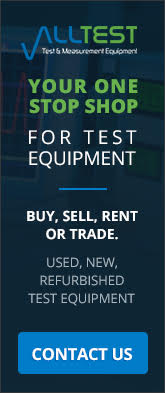The device operates both UCI (Ultrasonic Contact Impedance) and the Leeb (dynamic) probes. Getting benefit from two types of measurements is the ultimate advantage that a portable device can provide.
UCI method for the hardness testing
The UCI hardness measuring method complies to ASTM A 1038.
The ultrasonic contact impedance (UCI) probe is purposed to be used for hardness measuring in the case of the testing area minimal thickness (from 1 mm), objects of complex surface shape, and for measuring surface hardened layers hardness.
This method is very fast and easy: place the probe on the tested object surface, press the probe with the required effort to the surface and save the hardness value, shown on the display of the device. Small size diamond indenter allows measuring hardness value of all items, which are thicker than 1 mm. The UCI method of hardness testing is the least destructive because the hardness tester NOVOTEST T-UD3 with UCI probe leaves much smaller prints (imprints) than the majority of bench hardness tester would. That’s why a portable hardness tester with UCI probe is the best choice.
Leeb method for the hardness testing
The Leeb hardness measuring method complies to ASTM A956.
The Leeb probe is used for hardness measuring of massive objects (more than 5 kg, and more than 10 mm) and made of steels non-ferrous metals, cast irons, coarse-grained materials, e.t.c. Also, Leeb method perfectly complements with UCI hardness measuring method when UCI method is not applied.
This method is very fast and easy: place the probe on tested object vertically to the object surface, push the probe to charge the spring, press the button on the top of the probe to make measurement and save the hardness value, shown on the display. For the Leeb measuring method, NOVOTEST-UD3 automatically calculates hardness for a wide range of materials, like steel, stainless steel, cast iron, bronze, aluminum.
The combined hardness tester is the most universal, needs no recalibration, and is fully operational “out of the box”.
When the measurements are made, the operator can take a photo of the sample with the built-in photo camera and place the results exactly where the measurements occurred (up to 5 results per picture).
The saved measurements results and pictures may be transferred to a PC using the “ARM” software, which supplied along with the hardness tester.
The hardness tester allows measuring the hardness at extremely low temperatures.
In reality, tests have been carried out at – 25°C. There was no problem to operate the device at all. Measurement accuracy did not exceed the accuracy standards. The Keyboard and display gave no troubles at all, and we found no difference using the device in the warm and cold environment!
Portable Combined Hardness Tester NOVOTEST T-UD3 is CE certified.
- Small indenter imprint (suits for mirror surfaces of shafts necks, blades, gear teeth, etc.)
- Measuring surface hardened layers hardness
- Wide range of hardness testing
- Various measurement modes
- 88 combinations of materials and hardness scales (calibrations)
- Calibration of any scale in any range
- Convenience and ease of measurement
- Optimized number of buttons
- Large full-color graphic display with bright backlight
- Built-in photo camera for thorough reports
- Automatic probe types recognition
- Connected probe types indication
- The calibrations are stored in UCI probe memory
- Extended operating temperature range (frost, down to – 40°C)
- Internal memory and communication with a PC
- New intuitive menu with tips on the buttons
- Optional wireless mini printer
- Waterproofed housing
- Rubber bumper protected housing
- Internal clock
- Hardness value measuring for any mass products with more than 1 mm thickness (small parts, thin-walled structures, pipes, tanks, steel sheets, articles of complex shape, hardness testing of metal coatings, etc.)
- Different operating modes:
- Graph – the graph building mode
- Histogram – the histogram building mode
- Statistics – provides statistics for the current set of measurements
- Smart – filters the incorrect measurements
- Signal – displays the probe signal (only for the Leeb probe)
|
UCI probe types |
1kgf (10N) 2.2 lbf, 5kgf (50N) 11lbf, 10kgf (98N) 22lbf |
|
Leeb probe types |
D, DC, DL, C, D+15, E, G |
|
Measuring range |
HV:230~940; HRC:20~70; HB:90~650. Tensile strength, MPa 370~1740 |
|
Measuring accuracy |
HV:±3%HV; HRC:±1.5%HRC; HB:±3%HB |
|
Indenter |
Diamond indenter (UCI), Hardened ball (Leeb) |
|
Measuring direction |
Any direction 360° |
|
Data storage |
Limited only by the memory card |
|
Communication |
Upload data to PC and export as a spreadsheet (USB cable and software included ) |
|
Hardness scale |
HRC, HB, HV, HRB, HS, HL, MPa |
|
Materials |
|
|
Data display |
Load applied/contact (UCI), Angle (Leeb), Single test result, Max, Min, Average of tests, Number of tests, Deviation, Var. coeff, Histogram, Signal and Smart Mode (Filter of incorrect measurements). |
|
Indication |
Color LCD display (320×240) |
|
Operating environment |
Temperature:-20°C~40°C; Humidity: 30%~80%R.H. |
|
Power supply |
DC 4,5V (3 pcs batteries AA) |
|
Instrument dimensions |
160x75x30mm |
|
Net weight |
Approx. 0.3kg (without probe) |
|
Battery life |
Approx. 10 hours. |
- Different colors of rubber bumper protected case
- Wireless printer
- Batteries
- Chargers
- Hardness tests blocks
- Set of support rings for D, DC type Leeb probes
- Impact bodies for Leeb probes
- Portable grinding machine
- Case for hardness tester
- Can be equipped with two types of UCI probes:
|
Load |
Advantage or benefit |
Typical applications |
|
50N (11.2lbf) |
Considered to be the Universal type for most general applications. 50N of downward hand pressure is required to activate the probe. Surface finish equivalent to 80 grind or better. |
Induction or carburized machined parts, e.g.. camshafts, turbines, weld inspection, HAZ. Measurement in grooves, gear tooth flanks and roots Turbine blades, inside tubes with ∅> 90mm. |
|
10N (2.2lbf) |
Load is easy to apply; provides control to test on a sharp radius. Only 10N of downward hand pressure is required to activate the probe. Surface finish equivalent to 150 grind or better. |
Ion-nitrided stamping dies and molds, forms, presses, thin-walled parts Bearings, tooth flanks Turbine blades, inside tubes with∅> 90 mm. |
Product Average Rating: (0 reviews)
There are no reviews for this product at the moment
No current Alternatives.
You may find Alternatives in category.



